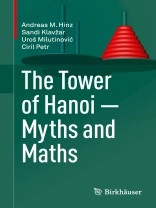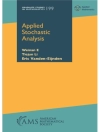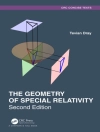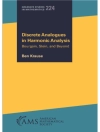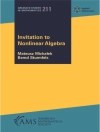This is the first comprehensive monograph on the mathematical theory of the solitaire game “The Tower of Hanoi” which was invented in the 19th century by the French number theorist Édouard Lucas. The book comprises a survey of the historical development from the game’s predecessors up to recent research in mathematics and applications in computer science and psychology. Apart from long-standing myths it contains a thorough, largely self-contained presentation of the essential mathematical facts with complete proofs, including also unpublished material. The main objects of research today are the so-called Hanoi graphs and the related Sierpiński graphs. Acknowledging the great popularity of the topic in computer science, algorithms and their correctness proofs form an essential part of the book. In view of the most important practical applications of the Tower of Hanoi and its variants, namely in physics, network theory, and cognitive (neuro)psychology, other related structures and puzzles like, e.g., the “Tower of London”, are addressed.
Numerous captivating integer sequences arise along the way, but also many open questions impose themselves. Central among these is the famed Frame-Stewart conjecture. Despite many attempts to decide it and large-scale numerical experiments supporting its truth, it remains unsettled after more than 70 years and thus demonstrates the timeliness of the topic.
Enriched with elaborate illustrations, connections to other puzzles and challenges for the reader in the form of (solved) exercises as well as problems for further exploration, this book is enjoyable reading for students, educators, game enthusiasts and researchers alike.
Inhaltsverzeichnis
Foreword by Ian Stewart.- Preface.- 0 The Beginning of the World.- 1 The Chinese Rings.- 2 The Classical Tower of Hanoi.- 3 Lucas’s Second Problem.- 4 Sierpinski Graphs.- 5 The Tower of Hanoi with More Pegs.- 6 Variations of the Puzzle.- 7 The Tower of London.- 8 Tower of Hanoi Variants with Oriented Disc Moves.- 9 The End of the World.- A Hints and Solutions to Exercises.- Glossary.- Bibliography.- Name Index.- Subject Index.- Symbol Index.
Über den Autor
Andreas M. Hinz is Professor at the Department of Mathematics, University of Munich (LMU), Germany. He has worked at the University of Geneva (Switzerland), King’s College London (England), the Technical University of Munich (Germany), and the Open University in Hagen (Germany). His main fields of research are real analysis, the history of science, mathematical modeling, and discrete mathematics.Sandi Klavžar is Professor at the Faculty of Mathematics and Physics, University of Ljubljana, Slovenia, and at the Department of Mathematics and Computer Science, University of Maribor, Slovenia. He is an author of three books on graph theory and an editorial board member of numerous journals including Discrete Applied Mathematics, European Journal of Combinatorics, and MATCH Communications in Mathematical and in Computer Chemistry.Uroš Milutinović is Professor at the Faculty of Natural Sciences and Mathematics, University of Maribor, Slovenia. His mainfields of research are topology and discrete mathematics.Ciril Petr is a researcher at the Faculty of Natural Sciences and Mathematics, University of Maribor, Slovenia.
